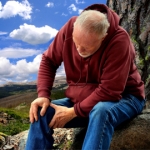 Arthritis is a disease marked by inflammation and stiffness in the joints, the part of our musculoskeletal system that facilitates movement. It develops in the hips, knees, elbows and fingers. The most common form of arthritis is osteoarthritis, a result of wear and tear on the cartilage that is supposed to protect the joints and bones underneath it.
Arthritis is a disease marked by inflammation and stiffness in the joints, the part of our musculoskeletal system that facilitates movement. It develops in the hips, knees, elbows and fingers. The most common form of arthritis is osteoarthritis, a result of wear and tear on the cartilage that is supposed to protect the joints and bones underneath it.
Osteoarthritis can develop as a result of age, weight gain and other environmental factors. There is no cure for osteoarthritis, but the pain can be managed. Weight loss surgery can reduce your risk of developing osteoarthritis, and can even alleviate some of the pain associated with the condition by reducing the amount of pressure on your joints.
Weight Gain and Joint Pain
Being overweight increases your risk for joint pain and arthritis by causing strain on your joints. The more weight you gain and the longer you struggle with obesity, the greater your risk for developing arthritis becomes.
According to the Centers for Disease Control and Prevention, two out of three obese individuals will develop osteoarthritis in their knees. With the ongoing rise of obesity rates, experts predict that more than 67 million Americans over the age of 18 will have arthritis by 2030. Though the condition has historically been connected with increased age, more children are developing chronic joint pain and arthritis—largely as a result of increased weight.
Joint pain often comes on slight and grows more severe over time. Symptoms of osteoarthritis often include:
- Tenderness and pain when pressure is applied to the joint
- Stiffness, especially in the morning or after periods of inactivity
- Clicking or grating sound with movement
- Bone spurs may develop, causing small bumps to become noticeable through the skin
- Reduced range of motion in the effected joint
Any form of arthritis can make even the most basic movements uncomfortable. Walking, cooking, writing, standing and sitting may grow difficult as the pain becomes more severe. In extreme cases, osteoarthritis requires surgical correction through joint replacement, such as through a hip or knee replacement.
Of knee and hip replacements for adults between the ages of 18 and 50, 72 percent are for obese individuals. Losing weight can reduce the deterioration of joint health, reduce the pain associated with osteoarthritis and reduce your risk of facing joint replacement surgery in the future.


